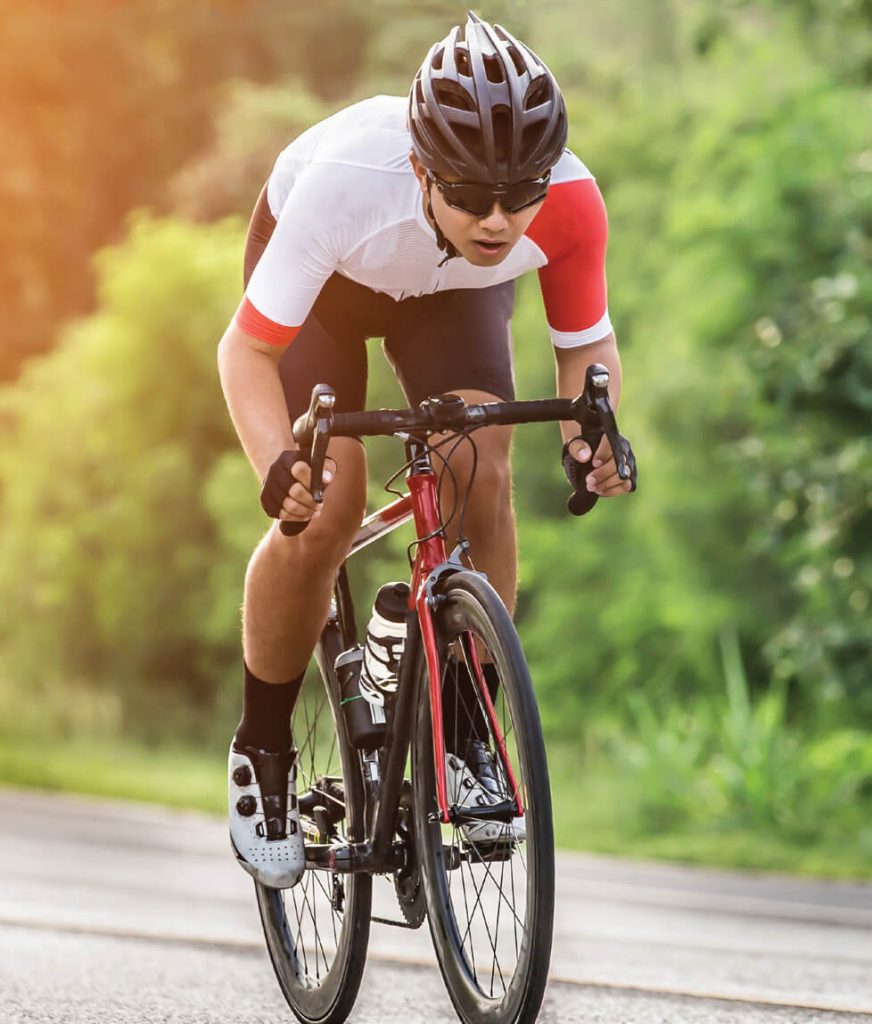
Besides following road safety guidelines, it is important for cyclists to have a good understanding of potential injuries and when to seek medical attention. It is also important for cyclists to understand potential injuries that may arise.
Lower back pain
Long-distance cyclists spend hours hunching over the handlebars. The problem may be exacerbated by a day job that requires you to work on a computer all day long, as these can culminate in lower back pain, spinal problems and a prolapsed disc.
Buttock pain
In piriformis syndrome, the sciatic nerve in the region of the piriformis muscle becomes trapped and irritated. Symptoms may include buttock pain, which can radiate down the back of the leg. Anti-inflammatory drugs, physiotherapy and sufficient rest are usually prescribed.
Knee pain
Pain at the front of the knee may be due to excessive repetitive force on the kneecap (patellofemoral joint). An immediate solution when this happens is to gear down: a faster spin will decrease the amount of contact time and pressure on your kneecap. Incorrect alignment of your knee and foot position may point your kneecap towards the top tube of the bicycle, causing maltracking of the kneecap. Adjustment of the cleat position and foot orthotics (shoes inserts) can address this issue. Other common problems include inflammation of the patella tendon (patella tendonitis), and pain at the side of the knee (iliotibial band syndrome). In most cases, rest, physiotherapy and anti-inflammatories can help the situation.
Neck, elbow and wrist pain
Injuries in the neck, elbow and wrist can be sustained even without falls. A compressed nerve can cause tingling or numbness in your hands. Wear cycling mitts and make adjustments so that your reach to the handlebars is not too long, and raise the handlebars if they are too low.
Foot and heel pain
Achilles tendonitis is the most common overuse ankle injury amongst cyclists. It can result from inadequate warm-up or exerting too much force during hill-climbing. Some cyclists may experience ‘hot’ foot, which presents as numbness or pain around the inside of the heel. Plantar fasciitis, a common cause of heel pain, involves inflammation of a thick band of tissues that supports the arch of the foot. Stretching, rest, and rolling a tennis ball under the foot may help alleviate symptoms.
Other injuries
Falling off your bike may cause different upper limb injuries. One common injury is a broken collarbone, which takes about six weeks to heal. In severe cases, surgery may be needed. Acute pain and restricted shoulder movement may present following a fall due to rotator cuff tear. If you banged your head even with a helmet on, you may incur a concussion requiring days to weeks to recover. Should signs of bleeding in the brain occur (confusion, vomiting, visual problems, difficulty balancing), medical attention should be sought urgently.
Guide for a safe ride
- Review bicycle set-up
Ensure that your bike is assembled by a professional, and parts such as brakes and tyres are regularly checked.
- Cycle within limits
Pace yourself and increase cycling distance moderately. Wear a helmet and suitable attire, install safety lights, and keep yourself hydrated. Plan your route and stick to bicycle lanes where possible. Avoid peak periods and areas with heavy traffic.
- Warm up and cool down
Build up your core strength. Warm up by stretching your hamstrings, calves and glutes. Start your session with gentle cycling for five minutes.







